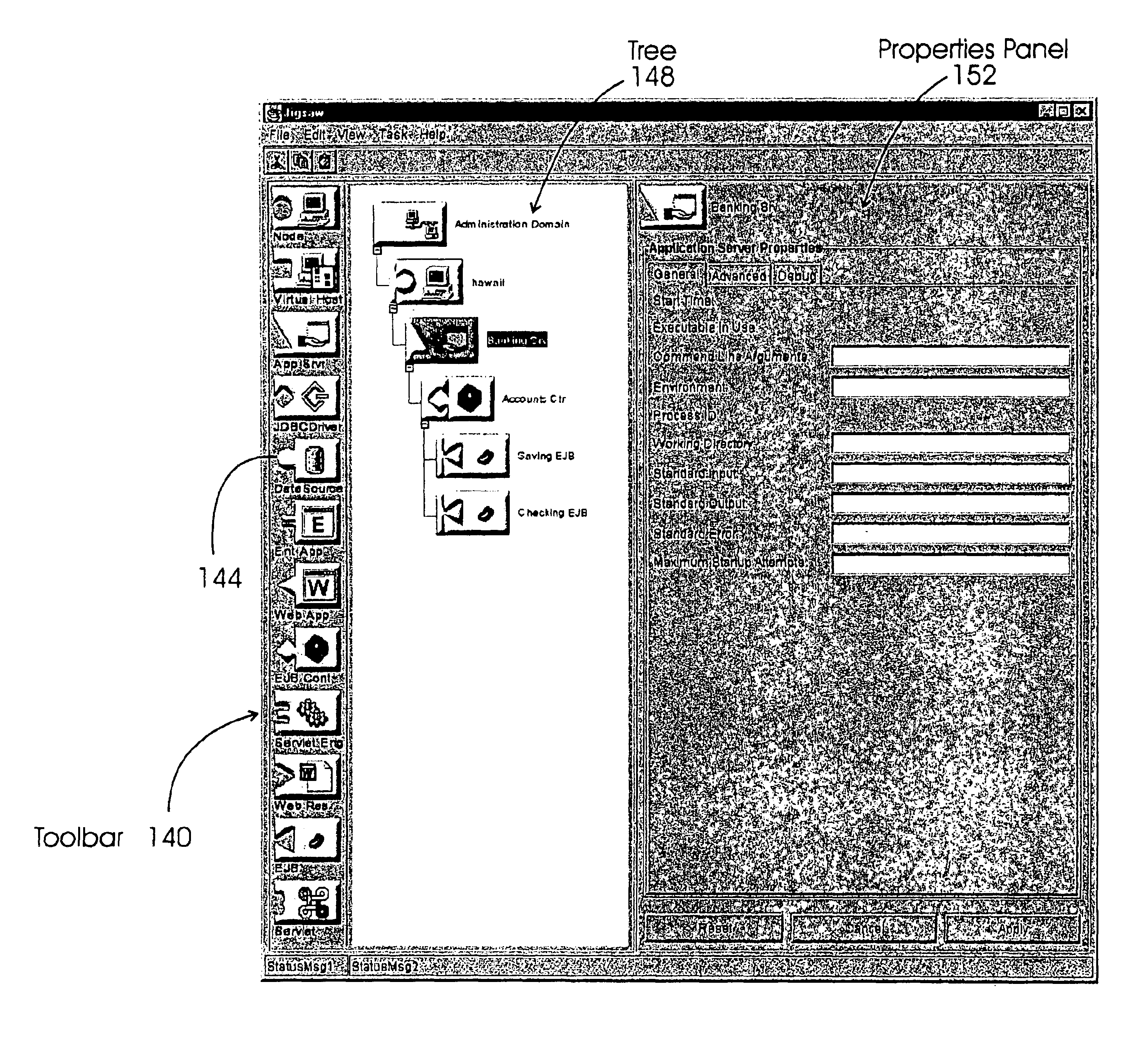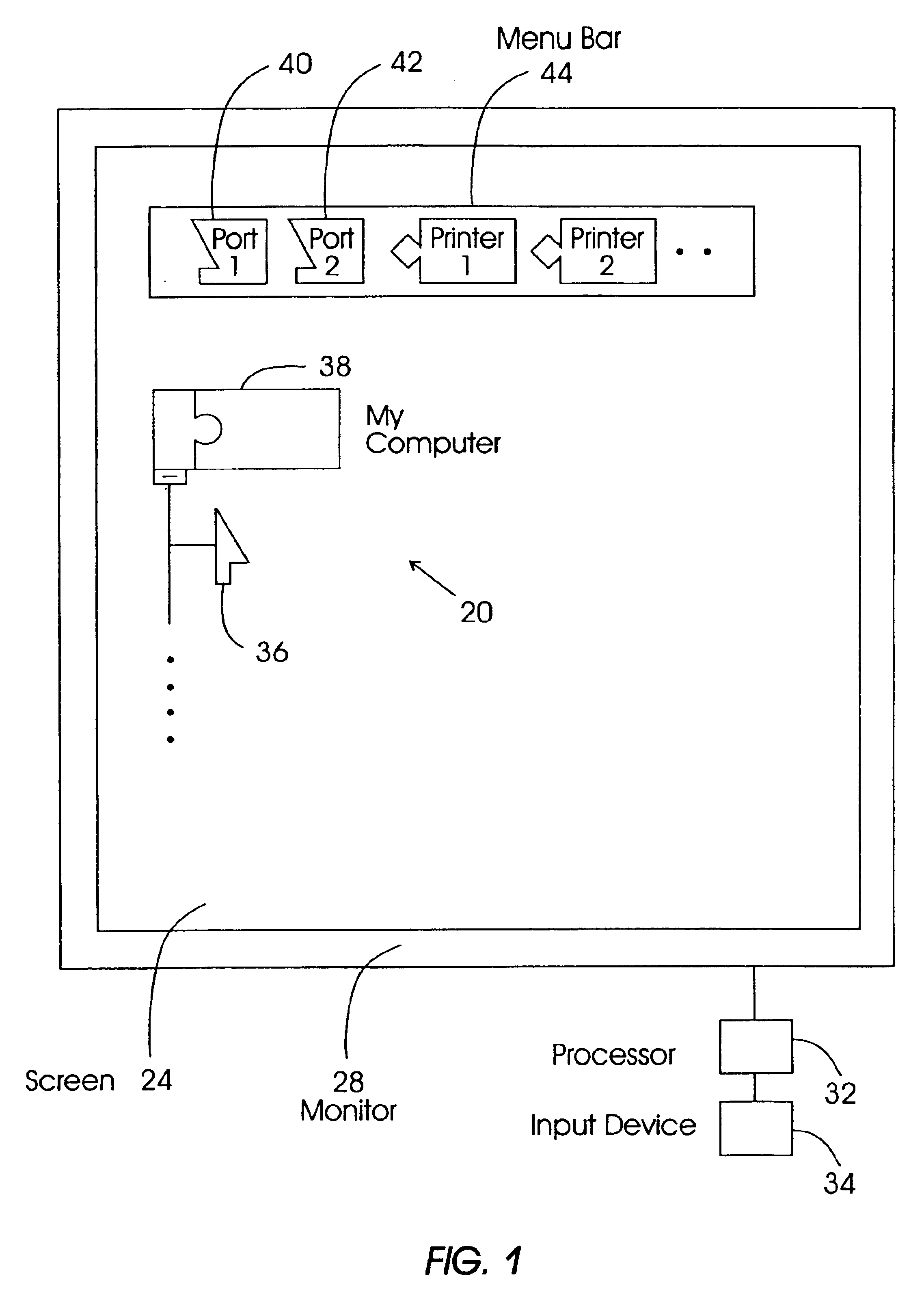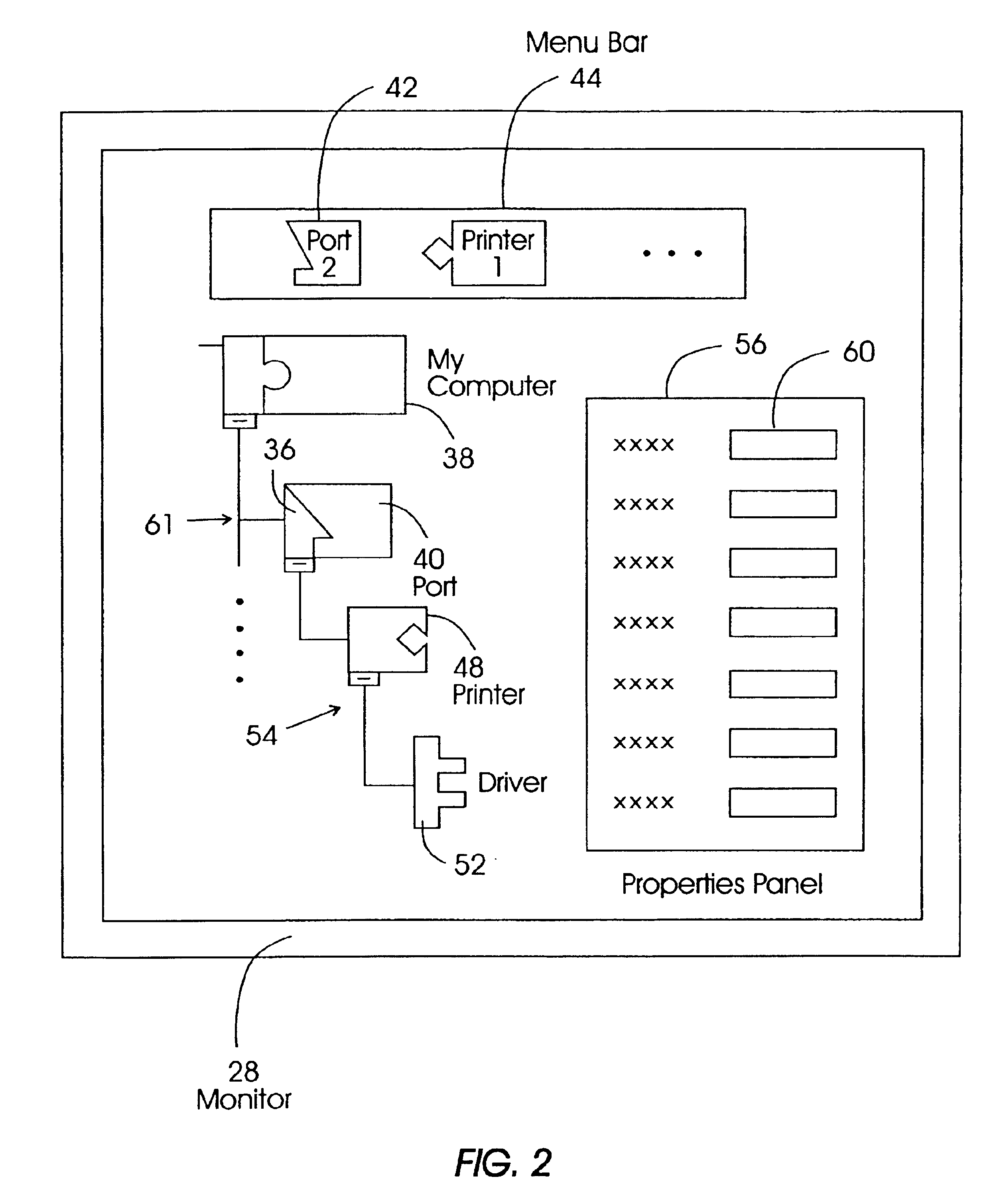Task composition method for computer applications
a task and task technology, applied in the field of computer/user interface, can solve the problems of increasing the complexity of the application commonly run on the computer, the installation of the computer printer, and the user's many procedures, and achieve the effect of facilitating task composition and learning
- Summary
- Abstract
- Description
- Claims
- Application Information
AI Technical Summary
Benefits of technology
Problems solved by technology
Method used
Image
Examples
Embodiment Construction
[0023]In preferred embodiments of the invention, an icon configured as a jigsaw piece represents a connector type for which there is an associated task to be completed, and another (one or more) icon configured as a matching jigsaw piece is used to initiate completion of that task. FIG. 1 shows a portion of a hierarchical “jigsaw” tree 20, including several jigsaw pieces displayed on a screen 24 of a monitor 28. The monitor 28 is tied to and receives inputs from a processor 32 or computer. (The processor 32 and its associated user input or interaction device 34 are shown only in FIG. 1 for clarity.) A jigsaw piece 36 stands ready to receive a mating piece 40 representing a first port (or alternatively a piece 42 representing a second port) from a menu or a tool bar 44. In this particular example, the piece 36 represents a hardware port (“port 1”) that must be configured, and the piece 36 has as its “parent piece” a completed piece 38 designating the computer's system. In general, a ...
PUM
 Login to View More
Login to View More Abstract
Description
Claims
Application Information
 Login to View More
Login to View More - R&D
- Intellectual Property
- Life Sciences
- Materials
- Tech Scout
- Unparalleled Data Quality
- Higher Quality Content
- 60% Fewer Hallucinations
Browse by: Latest US Patents, China's latest patents, Technical Efficacy Thesaurus, Application Domain, Technology Topic, Popular Technical Reports.
© 2025 PatSnap. All rights reserved.Legal|Privacy policy|Modern Slavery Act Transparency Statement|Sitemap|About US| Contact US: help@patsnap.com



